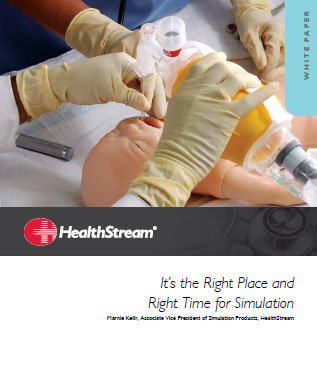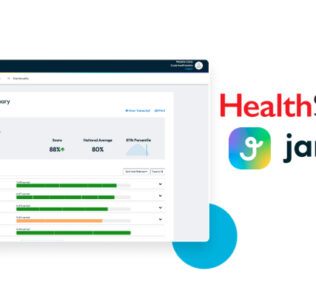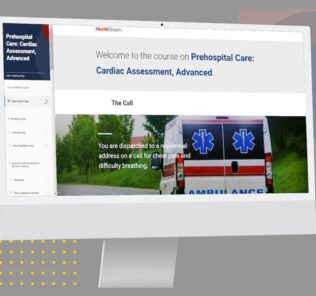HealthStream Provides WhitePaper "Right Time for Simulation"
Are you associated with a hospital system looking to start or expand a medical simulation based program? HealthStream just released a free white paper entitled “It’s the Right Place and Right Time for Simulation” on their blog which can help demonstrate the serious benefits of clinical simulation.
HealthStream explains that “Simulation has gained tremendous momentum over the last decade in academic medical centers, medical schools, and nursing schools as a powerful method of reinforcing clinical knowledge, improving team communication, and teaching decision-making skills. A national simulation study , conducted by the National Council of State Boards of Nursing, found that 87% of nursing schools are now using some form of high- or medium-fidelity simulation. Furthermore, a study of emergency medicine residency programs found that between 2003 and 2008, use of manikin simulators jumped from 29% to 85%.”
Sponsored Content:
The free white paper provides a basic introduction to the history, types, benefits and ways to get started with medical simulation. For example, consider these strong ROI benefits directly linked with healthcare simulation as explained in HealthStream’s Simulation White Paper (excerpted with permission):
- Staff teaching time. Focusing simulation-based training in areas like new-hire orientation helps organizations train nurses to be competent more quickly using fewer resources, ultimately saving preceptor time.
- Reimbursement. Simulation-based training helps improve clinical care quality in areas that greatly impact reimbursement, including hospital-acquired infections, unnecessary readmissions, and Never Events. For example, in a study (Cohen, 2010) on catheter-related blood stream infections, residents at Northwestern University were given simulation-based training, which resulted in fewer infections and led to a 7:1 cost savings.
- Litigation. Using simulation-based training to improve care in high-risk areas improves efforts to reduce malpractice suits. A 2008 study (Draycott et al.) in Obstetrics & Gynecology showed that the introduction of simulation-based training to maternity staff at a hospital in Bristol, UK was associated with improved clinical management and a significant reduction in neonatal injuries (dropping from 9 percent to 2 percent) in births complicated by shoulder dystocia. This high-risk perinatal condition places the fetus at risk for serious, lifelong injury and often results in costly lawsuits and awards.
These are particularly welcome propositions given the advent of the Affordable Care Act— healthcare reform, which has sent hospitals and other providers scrambling to improve clinical care quality and patient safety as they face the possibility of losing reimbursement through government initiatives and programs like value-based purchasing.
Visit HealthStream’s blog today and get your free copy of Marnie Kelly’s “It’s the Right Place and Right Time for Simulation” white paper!
Lance Baily, BA, EMT-B, is the Founder / CEO of HealthySimulation.com, which he started in 2010 while serving as the Director of the Nevada System of Higher Education’s Clinical Simulation Center of Las Vegas. Lance also founded SimGHOSTS.org, the world’s only non-profit organization dedicated to supporting professionals operating healthcare simulation technologies. His co-edited Book: “Comprehensive Healthcare Simulation: Operations, Technology, and Innovative Practice” is cited as a key source for professional certification in the industry. Lance’s background also includes serving as a Simulation Technology Specialist for the LA Community College District, EMS fire fighting, Hollywood movie production, rescue diving, and global travel. He and his wife live with their two brilliant daughters and one crazy dachshund in Las Vegas, Nevada.
Sponsored Content:
Sponsored Content:


















